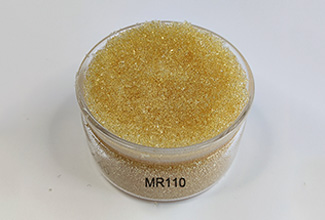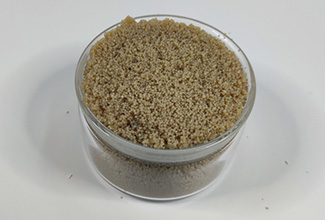Use of Polishing Resins in the Semiconductor Industry
Polishing resins play a crucial role in the semiconductor manufacturing process, particularly in Chemical Mechanical Polishing (CMP). CMP is a technique used to planarize the wafer surface and remove excess material through both chemical and mechanical actions. As a key material in the CMP process, the performance of polishing resins directly affects the quality and yield of chips.
Role of Polishing Resins in the CMP Process
- Material Removal: The chemical components in the polishing resin react with the wafer surface to soften and remove excess material.
- Lubrication: Polishing resins provide adequate lubrication, reducing friction and heat generation during the polishing process, thereby protecting the wafer surface.
- Particle Removal: Polishing resins can adsorb and remove particles generated during the polishing process, preventing them from scratching the wafer surface.
Specific Applications of Polishing Resins in Semiconductor Manufacturing
- Wafer Planarization:
- Removal of Residual Layers Post-CMP: Polishing resins effectively remove thin film layers left on the wafer surface after the CMP process, ensuring the smooth progress of subsequent steps.
- Flattening Local Steps: For wafers with local steps on the surface, polishing resins can perform fine planarization.
- Metal Layer Polishing:
- Copper Interconnects: Polishing resins are used to remove the oxide layers and impurities on copper interconnects, enhancing conductivity.
- Tungsten Plug: Polishing resins are used to flatten the surface of tungsten plugs, improving their contact with other layers.
- Dielectric Layer Polishing:
- Silicon Oxide Layers: Polishing resins are used to remove impurities from the silicon oxide layer, improving its dielectric properties.
- Silicon Nitride Layers: Polishing resins are used to flatten the silicon nitride layer, improving its surface quality.
- Multilayer Film Structure Polishing:
- Polishing resins can precisely remove different materials within multilayer film structures, achieving precise control over film thickness.
Impact of Polishing Resins on Semiconductor Device Performance
- Improved Device Performance: A planar wafer surface reduces leakage current, enhancing the reliability of the devices.
- Lower Process Costs: By optimizing the polishing process, wafer consumption can be reduced, lowering production costs.
- Shorter Time-to-Market: Improving process efficiency accelerates the product development cycle.
Polishing resins play an irreplaceable role in semiconductor manufacturing. Their continuous performance improvement has driven the miniaturization and integration of semiconductor devices. In the future, as semiconductor technology continues to advance, the demand for polishing resins will grow, and their research and development will become an important area of study in the semiconductor industry.
-
 MR110 Mixed Bed Ion Exchange ResinAppearance: Yellow-brown spherical particles.Ionic form:H+/OH-Volume complete exchange capacity(mmol/ml):≥0.6
MR110 Mixed Bed Ion Exchange ResinAppearance: Yellow-brown spherical particles.Ionic form:H+/OH-Volume complete exchange capacity(mmol/ml):≥0.6 -
 D001macroporous cation ion exchange resinAppearance: Light brown opaque spherical particles.Ionic form:Na+Volume complete exchange capacity(mmol/ml): ≥1.80
D001macroporous cation ion exchange resinAppearance: Light brown opaque spherical particles.Ionic form:Na+Volume complete exchange capacity(mmol/ml): ≥1.80 -
 D005 Catalyst ResinAppearance: Gray opaque spherical particles.Ionic form:H+Volume complete exchange capacity(mmol/ml):≥4.7
D005 Catalyst ResinAppearance: Gray opaque spherical particles.Ionic form:H+Volume complete exchange capacity(mmol/ml):≥4.7

